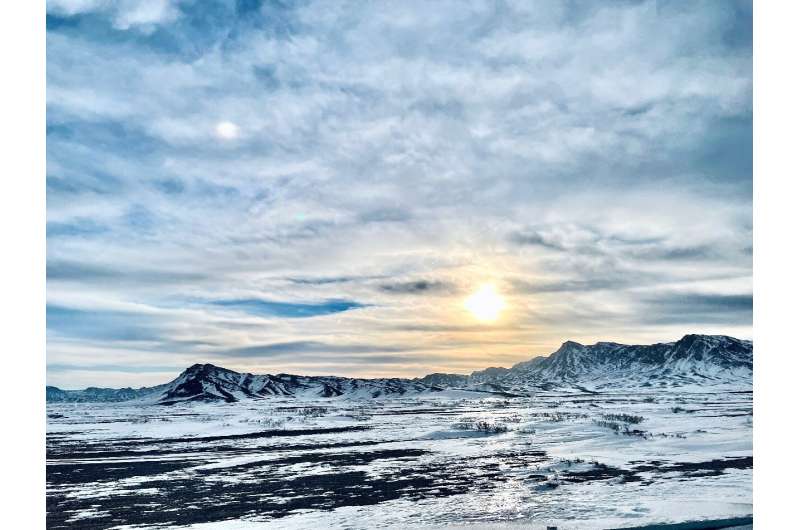This article has been reviewed according to Science X's editorial process and policies. Editors have highlighted the following attributes while ensuring the content's credibility:
fact-checked
peer-reviewed publication
trusted source
proofread
Scientists reveal how reduced sea ice in the Barents–Kara seas can increase snow cover in Eurasia

Snowfall accumulates to form snow cover, which can then influence other components of the earth system at various scales, such as atmospheric circulation, climatic anomalies, the hydrological cycle, and ecosystems.
Therefore, it is crucial to study snow cover, particularly its variability. Making a key contribution in this regard, recent research has revealed how the sea ice in the Barents–Kara seas in November was an important factor affecting the distribution and interannual variability of snow-cover extent in Eurasia from November to January (winter) during 1979 to 2021.
Specifically, a research team from the Northwest Institute of Eco-Environment and Resources at the Chinese Academy of Sciences used reanalysis data to analyze the atmospheric circulation and moisture transport in winter in relation to reduced sea ice.
The team found that changes in the circulation in both the troposphere and stratosphere induced a southward breakout of cold air in the Arctic, causing extreme wintertime cooling over Eurasia. Furthermore, two prominent cyclonic anomalies near Europe and Lake Baikal affected the moisture transport and its convergence.
Further analysis revealed that the effects of moisture advection and wind divergence influenced the water vapor budget, thereby affecting precipitation. As a result, snow cover increased in much of Europe, Central Asia, and East Asia under the necessary conditions of both water vapor transport and temperature. The results were evaluated in version 5 of the Community Atmosphere Model.
"This work should prove helpful in better understanding and predicting snowfall conditions in the middle latitudes," says Prof. Shichang Kang, corresponding author of the study published in Advances in Atmospheric Sciences.
More information: Qian Yang et al, Impact of the Shrinkage of Arctic Sea Ice on Eurasian Snow Cover Changes in 1979–2021, Advances in Atmospheric Sciences (2023). DOI: 10.1007/s00376-023-2272-x
Journal information: Advances in Atmospheric Sciences
Provided by Chinese Academy of Sciences




















